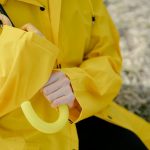When you're selecting waterproof fabrics for outdoor activities, understanding breathability is essential. You might think that waterproof means completely sealed off, but that's not the whole picture. Breathable materials let moisture escape, helping you stay comfortable and avoid that clammy feeling during intense exertion. However, not all fabrics are created equal, and factors like Moisture Vapor Transmission Rate (MVTR) come into play. So, how do you determine which options strike the right balance between waterproofing and breathability? Let's explore this further.
Table of Contents
Key Takeaways
- Breathability refers to a fabric's ability to allow moisture vapor to escape while blocking water, enhancing comfort during activities.
- Breathability is measured through Moisture Vapor Transmission Rate (MVTR), hydrostatic head tests, and air permeability tests to assess performance.
- Breathable fabrics prevent overheating and clamminess by facilitating sweat evaporation, crucial for high-intensity outdoor activities.
- Non-breathable fabrics trap moisture and heat, leading to discomfort, while breathable options often feature tiny pores or membranes for ventilation.
What Is Breathability?
Breathability refers to a fabric's ability to allow moisture vapor to escape while keeping water out, making it essential for comfort in waterproof clothing. When you wear waterproof gear, it's crucial that sweat doesn't build up inside, leading to discomfort and chill.
Breathable fabrics strike a balance, ensuring that while you stay dry from external moisture, your body's perspiration can escape. In simple terms, breathability helps you maintain a comfortable microclimate within your clothing. If a fabric isn't breathable, you might find yourself feeling clammy or overheated, even in wet conditions. This is especially important for activities like hiking, skiing, or cycling, where your body temperature fluctuates.
Different fabrics offer varying levels of breathability, which is influenced by their construction and materials. For instance, a high-quality waterproof jacket may feature a membrane that permits vapor to escape while blocking rain, enhancing your overall experience.
Ultimately, when choosing waterproof clothing, consider how breathability affects your comfort during your outdoor adventures. Without it, you might find yourself sacrificing performance for protection, which isn't ideal for anyone who loves being active in unpredictable weather.
How Breathability Is Measured
To determine a fabric's breathability, manufacturers often use specific tests that measure how much moisture vapor can pass through the material over time. One common method is the Moisture Vapor Transmission Rate (MVTR) test, which quantifies how much water vapor can escape from the fabric.
Another technique involves the use of a hydrostatic head test, which measures the fabric's resistance to water penetration. This helps assess how the material balances waterproofing with breathability.
Here's a simple comparison of breathability measurement methods:
| Measurement Method | Description | Typical Units |
|---|---|---|
| Moisture Vapor Transmission Rate (MVTR) | Measures vapor passing through over time | g/m²/24h |
| Hydrostatic Head Test | Assesses water resistance | mm water column |
| Air Permeability Test | Evaluates airflow through the fabric | cfm (cubic feet/min) |
Understanding these methods gives you insight into how different fabrics perform under various conditions. By knowing these metrics, you can make informed choices in selecting breathable waterproof fabrics for your needs.
Importance of Breathability
Understanding how breathability impacts comfort and performance is vital when choosing waterproof fabrics for outdoor activities.
When you're out in the elements, your body generates heat and moisture. If the fabric can't let that moisture escape, you'll quickly feel uncomfortable, leading to chill and fatigue.
Breathable fabrics allow sweat to evaporate, keeping you dry and regulating your body temperature. This is especially important during high-intensity activities like hiking or cycling, where your exertion levels fluctuate. If you're wearing a non-breathable fabric, you risk overheating, which can result in exhaustion and discomfort.
Moreover, breathability directly affects the overall longevity of your gear. When moisture gets trapped, it can create an environment for mold and mildew, ultimately compromising the fabric's integrity.
You want a fabric that not only protects you from the rain but also allows your body to breathe.
Breathable Vs. Non-Breathable Fabrics
When comparing breathable and non-breathable fabrics, the key difference lies in how well each type manages moisture and heat during outdoor activities.
Breathable fabrics allow sweat and moisture to escape, keeping you dry and comfortable. This is crucial when you're hiking, running, or engaging in any activity that generates heat. You'll notice that breathable materials often feature tiny pores or membranes that facilitate moisture transfer while still providing a waterproof barrier.
On the other hand, non-breathable fabrics trap heat and moisture next to your skin. This can lead to discomfort and even overheating, especially during intense activities. If you wear a non-breathable jacket, for instance, you might find yourself feeling clammy and cold once you stop moving.
While these fabrics can offer protection against wind and rain, they don't allow for adequate ventilation.
Choosing the Right Fabric
Selecting the right fabric for your outdoor activities depends on balancing breathability and waterproofing to match your specific needs.
First, consider the type of activity you'll be engaging in. If you're hiking in wet conditions, look for a fabric that offers excellent waterproofing and breathability, like Gore-Tex or eVent. These materials allow moisture to escape while keeping water out, ensuring you stay dry and comfortable.
Next, think about the weather conditions you'll encounter. For colder climates, a thicker, insulated fabric might be necessary, while lighter fabrics are better for warmer weather, where breathability is crucial. You don't want to overheat during your adventures.
Also, take the fabric's durability into account. If you're navigating rough terrain, opt for a tougher material that can withstand abrasions.
Lastly, consider the fit of your gear. A well-fitted garment enhances breathability by allowing air to circulate more effectively.
Frequently Asked Questions
Can Breathability Affect the Durability of Waterproof Fabrics?
Yes, breathability can affect the durability of waterproof fabrics. When moisture accumulates, it can lead to material degradation. You'll want a balance between breathability and waterproofing to ensure longevity and performance in your gear.
Are There Eco-Friendly Options for Breathable Waterproof Fabrics?
Yes, you can find eco-friendly options for breathable waterproof fabrics. Look for materials made from recycled plastics or natural fibers, which offer sustainability without sacrificing performance. Brands are increasingly prioritizing environmentally conscious choices in their product lines.
How Does Humidity Impact Fabric Breathability?
Humidity significantly affects fabric breathability. When humidity rises, moisture in the air can make it tougher for fabrics to release sweat, leading to a feeling of dampness and discomfort. You'll notice the difference immediately.
Can Breathability Vary Between Different Brands of the Same Fabric Type?
Yes, breathability can definitely vary between different brands of the same fabric type. Each brand may use unique technologies or treatments, affecting how well the fabric allows moisture to escape while remaining waterproof.
What Maintenance Is Required to Preserve Fabric Breathability?
To preserve fabric breathability, you should regularly clean it according to the manufacturer's instructions, avoid using fabric softeners, and store it in a dry, cool place. These steps help maintain its performance over time.
- An Overview of China’s Role in Apple’s Product Fabrication - June 20, 2025
- The Process of Sourcing and Importing Textiles From China - June 20, 2025
- Custom Metal Part Fabrication: Why Businesses Choose China - June 20, 2025





